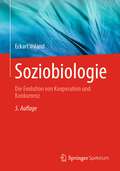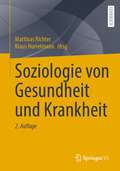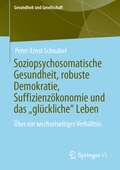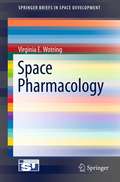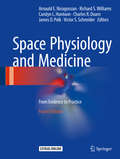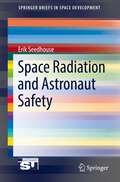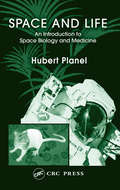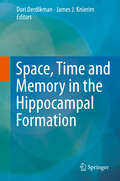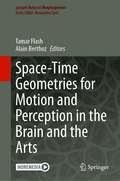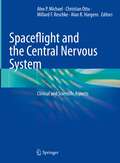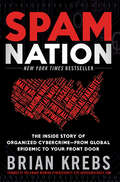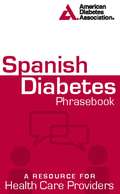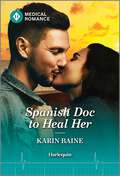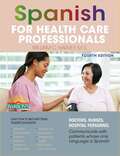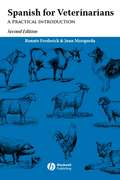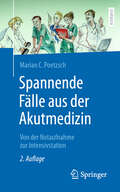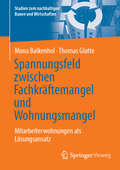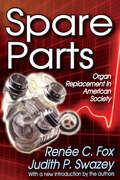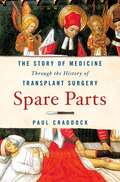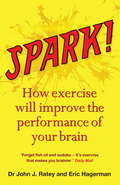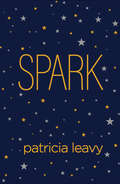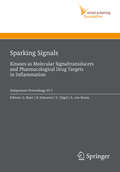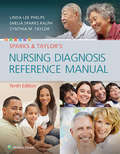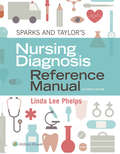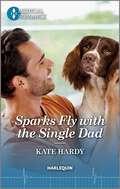- Table View
- List View
Soziobiologie: Die Evolution von Kooperation und Konkurrenz
by Eckart VolandSoziobiologie ist den evolutionsbiologischen Ursprüngen und Gründen tierlichen und menschlichen Sozialverhaltens auf der Spur. In diesem Buch werden Strategien sozialer Konkurrenz, also Gewalt, Kampf und Dominanz behandelt, aber auch Kooperation, Altruismus und Solidarität. Die Interessen der beiden Geschlechtern sind Treibstoff der sexuellen Selektion. Kooperation ist also immer auch brüchiger Kompromiss im Kampf der Geschlechter zu verstehen. Außerdem geht es um die neuesten Erkenntnisse zur Evolution der Eltern/Kind-Verhältnisses und um ein Brutpflegeverhalten, das Kindesvernachlässigung und zugleich auch tief empfundene elterliche Zuneigung und Fürsorge möglich macht. Beschrieben wird, wie eine evolutionäre Perspektive auf das menschliche Verhalten zum modernen Menschenbild beiträgt. Das Buch richtet sich an Studierende und Lehrende der Biologie, Anthropologie, Psychologie und Sozialwissenschaften und an alle an der evolutionären Geschichte des menschlichen Sozialverhaltens Interessierte.
Soziologie von Gesundheit und Krankheit
by Matthias Richter Klaus HurrelmannDieser Band bietet einen systematischen Überblick über die zentralen theoretischen Debatten und empirischen Grundlagen der Soziologie von Gesundheit und Krankheit. Führende Expertinnen und Experten geben einen detaillierten Einblick in die relevanten Inhalte und aktuellen Entwicklungen der Disziplin, zum Beispiel die sozialen Determinanten von Gesundheit, die Erfahrung und Bewältigung von Krankheit oder die soziale Organisation der gesundheitlichen Versorgung. Jedes Kapitel orientiert sich an zentralen Fragestellungen, schließt mit einem Fazit ab und bietet darüber hinaus konkrete Diskussionsanregungen und Empfehlungen zur inhaltlichen Vertiefung. Das Buch bildet dadurch die ideale Grundlage für Studierende sowie den Einsatz in der Lehre.
Soziopsychosomatische Gesundheit, robuste Demokratie, Suffizienzökonomie und das „glückliche“ Leben: Über ein wechselseitiges Verhältnis (Gesundheit und Gesellschaft)
by Peter-Ernst SchnabelNicht einmal zehn Prozent der knapp zweihundertdreißig Milliarden Euro, die sich die Deutschen ihre Krankenversorgung jährlich kosten lassen, fließen gegenwärtig in die Präventionspolitik und davon wiederum nicht mehr als zwanzig Prozent in die Förderung der Gesundheit. Die vorliegende Untersuchung setzt sich in kritisch-konstruktiver Manier mit den interventionsphilosophischen, systemischen und professionspolitischen Hindernissen auseinander, die der längst fälligen Beseitigung dieses Unterversorgungsdilemmas im Wege stehen. Sie bemüht sich, mit dem Irrglauben aufzuräumen, dass eine Gesundheitsförderungspolitik, die mehr sein will, als die bloße Verhinderung von Krankheit und Gebrechen, realisiert werden könne, ohne die bestehenden politischen, wirtschaftlichen und gesellschaftlichen Bedingungen grundlegend zu verändern. Und sie macht Vorschläge, in welche Richtung diese Veränderung gehen könnte.
Space Pharmacology
by Virginia E. Wotring"Space Pharmacology" is a review of the current knowledge regarding the use of pharmaceuticals during spaceflights. It is a comprehensive review of the literature, addressing each area of pharmacokinetics and each major physiological system in turn. Every section begins with a topic overview, and is followed by a discussion of published data from spaceflight, and from ground experiments meant to model the spaceflight situation. Includes a discussion looking forward to the new medical challenges we are likely to face on longer duration exploration missions. This book is a snapshot of our current knowledge that also highlights areas of unknown.
Space Physiology and Medicine
by Arnauld E. Nicogossian Richard S. Williams Carolyn L. Huntoon Charles R. Doarn James D. Polk Victor S. SchneiderAs space medicine evolved from the late 1950s onward, the need arose for a ready reference for students and practitioners on the basic concepts of this new specialty. Through three editions edited by leaders in the development of space medicine, this classic text has met the need. This fourth edition of Space Physiology and Medicine provides succinct, evidence-based summaries of the current knowledge base in space medicine and serves as a source of information on the space environment, responses, and practices. Additionally, there is extensive online material available for each chapter, featuring overviews and self-study questions.
Space Radiation and Astronaut Safety (Springerbriefs In Space Development Ser.)
by Erik SeedhouseThis brief explores the biological effects of long-term radiation on astronauts in deep space. As missions progress beyond Earth's orbit and away from the protection of its magnetic shielding, astronauts risk constant exposure to higher levels of galactic cosmic rays and solar particle events. The text concisely addresses the full spectrum of biomedical consequences from exposure to space radiation and goes on to present possible ways to mitigate such dangers and protect astronauts within the limitations of existing technologies.
Space and Life: An Introduction to Space Biology and Medicine
by Hubert PlanelSince our first manned space flights we have learned much about how the human body adapts to the space environment and in particular, to the absence of gravity. Today, space research provides a better understanding of our physiological response mechanisms to microgravity.Space and Life: An Introduction to Space Biology and Medicine describe
Space,Time and Memory in the Hippocampal Formation
by Dori Derdikman James J. KnierimThe discovery of new cell types, such as grid and time cells, in the hippocampus has been accompanied by major anatomical and theoretical insights in the recent years. This book provides comprehensive, up-to-date information about the hippocampal formation and especially the neural basis of episodic memory, spatial location (the formation of the cognitive map) and temporal representation. The first part of the book describes the information flow from pre-hippocampal areas into the hippocampus, the second part discusses the different types of hippocampal processing and finally, the third part depicts the influence that the hippocampal processing has on other brain structures that are perhaps more closely tied to explicit cognitive or behavioral output. This book is intended for neuroscientists, especially for those who are involved in research on the hippocampus, as well as for behavioral scientists and neurologists.
Space-Time Geometries for Motion and Perception in the Brain and the Arts (Lecture Notes in Morphogenesis)
by Alain Berthoz Tamar FlashThis book is based on a two-day symposium at the Paris Institute of Advanced Study titled "space-time geometries and movement in the brain and the arts". It includes over 20 chapters written by the leading scientists and artists who presented their related research studies at the symposium and includes six sections; the first three focus on space-time geometries in perception, action and memory while the last three focus on specific artistic domains: drawing and painting, dance, music, digital arts and robotics. The book is accompanied by a dedicated webpage including related images and videos. There is an ever-growing interest in the topics covered by this book. Space and time are of fundamental importance for our understanding of human perception, action, memory and cognition, and are entities which are equally important in physics, biology, neuroscience and psychology. Highly prominent scientists and mathematicians have expressed their belief that our bodies and minds shape the ways we perceive space and time and the physical laws we formulate. Understanding how the brain perceives motion and generates -bodily movements is of great significance. There is also growing interest in studying how space, time and movement subserve artistic creations in different artistic modalities (e.g., fine arts, digital and performing arts and music). This interest is inspired by the idea that artists make intuitive use of the principles and simplifying strategies used by the brain in movement generation and perception. Building upon new understanding of the spatio-temporal geometries subserving movement generation and perception by the brain we can start exploring how artists make use of such neuro --geometrical and neuro-dynamic representations in order to express artistic concepts and emotionally affect the human observers and listeners. Scientists have also started formulating new ideas of how aesthetic judgements emerge from the principles and brain mechanisms subserving motor control and motion perception.Covering novel and multidisciplinary topics, this advanced book will be of interest to neuroscientists, behavioral scientists, artificial intelligence and robotics experts, students and artists.
Spaceflight and the Central Nervous System: Clinical and Scientific Aspects
by Christian Otto Alan R. Hargens Millard F. Reschke Alex P. MichaelThis book consolidates the current knowledge of how short and long-duration spaceflight affects the anatomy and physiology of the central nervous system. It also incorporates the methodology and constraints of studying the central nervous system in space. Chapters detail advances in imaging techniques available to assess intracranial and intraocular pathology as well as translational medicine with an emphasis on brain cancer and neurodegenerative disease in spaceflight. Additionally, the book offers theoretical background information, tested laboratory protocols, and step-by-step methods for reproducible lab experiments to aid neuroscientists and neurobiologists in laboratory testing and experimentation. Spaceflight and the Central Nervous System is the first to comprehensively include all aspects of spaceflight-induced changes in the central nervous system. It is an invaluable resource for basic and clinical laboratory trainees and researchers in aerospace medicine and physiology or for those looking to gain specific knowledge in spaceflight neuroscience.
Spam Nation: The Inside Story of Organized Cybercrime—from Global Epidemic to Your Front Door
by Brian KrebsA New York Times bestseller and winner of a 2015 Prose Award!There is a threat lurking online. A secret war with the power to destroy your finances, steal your personal data, and endanger your life.In Spam Nation, investigative journalist and cybersecurity expert Brian Krebs unmasks the criminal masterminds driving some of the biggest spam and hacker operations targeting Americans and their bank accounts. Tracing the rise, fall, and alarming resurrection of the digital mafia behind the two largest spam pharmacies—and countless viruses, phishing, and spyware attacks—he delivers the first definitive narrative of the global spam problem and its threat to consumers everywhere.Blending cutting-edge research, investigative reporting, and firsthand interviews, this terrifying true story reveals how we unwittingly invite these digital thieves into our lives every day. From unassuming computer programmers right next door to digital mobsters like "Cosma"—who unleashed a massive malware attack that has stolen thousands of Americans' logins and passwords—Krebs uncovers the shocking lengths to which these people will go to profit from our data and our wallets.Not only are hundreds of thousands of Americans exposing themselves to fraud and dangerously toxic products from rogue online pharmacies, but even those who never open junk messages are at risk. As Krebs notes, spammers can—and do—hack into accounts through these emails, harvest personal information like usernames and passwords, and sell them on the digital black market. The fallout from this global epidemic doesn't just cost consumers and companies billions, it costs lives too.Fast-paced and utterly gripping, Spam Nation ultimately proposes concrete solutions for protecting ourselves online and stemming this tidal wave of cybercrime—before it's too late."Krebs's talent for exposing the weaknesses in online security has earned him respect in the IT business and loathing among cybercriminals… His track record of scoops...has helped him become the rare blogger who supports himself on the strength of his reputation for hard-nosed reporting." —Bloomberg Businessweek
Spanish Diabetes Phrasebook
by American Diabetes AssociationThe only Spanish-English resource to help you communicate with your patients with diabetesWith more and more physicians, clinicians, educators, and administrators working with Latino and Hispanic patients, ensuring accurate communication is more important than ever. This handy pocket reference offers the Spanish equivalents to common phrases you use every day. From patient introductions to medical histories, examinations, and follow-up, you can provide a more trusting environment and quality care by engaging patients directly.Phrases are divided into nine, natural groups for ease of use. A glossary of related terms is included, Diabetes Spanish Phrasebook provides accurate communication, critical in all aspects of medical diagnosis, education, and general diabetes care to help you communicate more effectively with your Spanish-speaking patients.Written by the experts at the American Diabetes Association, the nation's leading voluntary health organization supporting diabetes research, information, and advocacy and the leading publisher of comprehensive diabetes information.Topics include:Greeting and IntroductionIdentifying the PatientMedications and AllergiesChief Complaint (CC)History of Present IllnessPast Medical HistoryReview of SystemsExaminationFollow-Up and PlanList of Relevant Terms
Spanish Doc to Heal Her (Jet Set Docs)
by Karin BaineIn this Jet Set Docs story by Karin Baine, Dr. Inés returns to Spain, where she meets her infuriatingly handsome new colleague, Dr. Ángelo. As their undeniable chemistry burns hotter every day, can they both heal from their pasts for a second chance at love? LOVE HAPPENS WHEN YOU LEAST EXPECT IT! It&’s often said that home is where the heart is. But Dr. Inés had zero intention of returning to Spain and her controlling family… Until her ex-boyfriend left her with no choice but to work at her father&’s medical practice. The only ray of hope? Inés&’s new coworker, Dr. Ángelo, who is as infuriating as he is irresistible. Yet while their attraction burns hotter than the Mediterranean sun, is Inés ready to bring down her barriers and let Ángelo in?From Harlequin Medical: Life and love in the world of modern medicine. Jet Set Docs
Spanish for Health Care Professionals, 4th ed.
by William C. HarveyThis book is designed to help doctors, nurses, and medical assistants communicate in Spanish with Latino patients and their families who have little or no command of English. Fully updated text includes the addition of vocabulary for informing families about patients' medical care or death; instructing patients on how to navigate online forms; a sample disclosure and consent form in both Spanish and English; and a new section on working with medical interpreters. Every Spanish word in the book is followed by its phonetic pronunciation. The book also provides easy-to-follow tips on understanding colloquial spoken Spanish. Author William Harvey concentrates on words and phrases likely to be used in a medical setting. True-to-life dialogues dramatize situations pertaining to pregnancy, broken bones, pediatric care, heart and lung diseases, pharmacy prescriptions, and much more.
Spanish for Veterinarians
by Bonnie FrederickSpanish for Veterinarians, Second Edition, is designed to help you rapidly learn working Spanish for clinical conversations. Packed with the practical vocabulary information and conversational tools found in the first edition, the new edition now includes a new chapter on exotics and expanded information on the Spanish required for pre-consultation discussion. The pronunciation exercises, available online as audio files to help veterinary team members effectively and confidently use Spanish in their client communications, have also been revised and expanded. This new edition is a lively presentation of the Spanish that working vets increasingly need to know.
Spannende Fälle aus der Akutmedizin: Von der Notaufnahme zur Intensivstation
by Marian C. PoetzschDieses Buch gibt in seiner zweiten Auflage einen frischen, spannenden und unterhaltsamen Einblick in die Akutmedizin. Es begleitet ein Ärzteteam bei seiner Arbeit und verpackt die medizinischen Fakten in Geschichten, deren Protagonisten die Ärzte im Dienst sind. Es soll Wissen vermitteln, ohne zu langweilen und jungen Medizinern dabei helfen, sich auf die Zeit in Notaufnahme und Intensivstation vorzubereiten. Dabei kommt neben dem Fachwissen auch das Zwischenmenschliche nicht zu kurz. Vom ersten Symptom über die Behandlung in der Notaufnahme bis zur Versorgung auf der Intensivstation Faktencheck zu jedem Fall – das Hintergrundwissen zu Diagnostik und Therapie Fragen am Kapitelende zum Selbsttest Der Autor Dr. Marian Poetzsch ist Facharzt für Innere und Allgemeinmedizin, Notfall- und Intensivmediziner. Seine Ausbildung machte er in den Bereichen Innere Medizin, Chirurgie, Pädiatrie und Anästhesie. Er leitet als Chefarzt die Zentrale Notaufnahme im Klinikum Fürstenfeldbruck.
Spannungsfeld zwischen Fachkräftemangel und Wohnungsmangel: Mitarbeiterwohnungen als Lösungsansatz (Studien zum nachhaltigen Bauen und Wirtschaften)
by Thomas Glatte Mona BalkenholVor dem Hintergrund des aktuell herrschenden Wohnungsmangels und dem Mangel an Fachkräften in Deutschland werden Mitarbeiterwohnungen wieder neu entdeckt. Diese Publikation untersucht die Mitarbeiterwohnungen als passenden Lösungsansatz in dem Spannungsfeld zwischen Fachkräftemangel und Wohnungsmangel. Hierbei werden erste Einblicke in die Wahrnehmung von Akademikern der Generation Z in Bezug auf Mitarbeiterwohnungen gewährt. Ebenso stellt die Publikation Erkenntnisse für eine Steigerung der Arbeitgeberattraktivität gegenüber jungen Arbeitnehmern dar.
Spare Parts: Organ Replacement in American Society
by Renee C. FoxSpare Parts examines major developments in the field of organ replacement that occurred in the United States over the course of the 1980s and the beginning of the 1990s. It focuses upon significant medical and social changes in the transplantation of human organs and on the development and clinical testing of the Jarvik-7 artificial heart, with special emphasis on how these biomedical events were related to the political, economic, and social climate of American society.Part I examines the important biomedical advances and events in organ transplantation and their social and cultural concomitants. In Part II, the focus shifts to the story of the rise and fall of the Jarvik-7 artificial heart in the United States, its relation to American social institutions and cultural patterns, and its bearing on social control issues associated with therapeutic innovation and the patient-oriented clinical research it entails. Part III is a personal conclusion, which explains why the authors left the field of organ transplantation after so many years.Spare Parts is written in a narrative, ethnographic style, with thickly descriptive, verbatim, and atmospheric detail. The primary data it is based upon includes qualitative materials, collected via participant observation, interviews in a variety of medical milieu, and content analysis of medical journals, newspapers, and magazine articles, and a number of television transcripts. The new introduction provides an overview of some of the recent developments in transplantation and also underscores how tenacious many of the patterns associated with organ replacement have been. Spare Parts should be read by all medical professionals, sociologists, and historians.
Spare Parts: The Story of Medicine Through the History of Transplant Surgery
by Paul CraddockPaul Craddock's Spare Parts offers an original look at the history of medicine itself through the rich, compelling, and delightfully macabre story of transplant surgery from ancient times to the present day.How did an architect help pioneer blood transfusion in the 1660's?Why did eighteenth-century dentists buy the live teeth of poor children?And what role did a sausage skin and an enamel bath play in making kidney transplants a reality?We think of transplant surgery as one of the medical wonders of the modern world. But transplant surgery is as ancient as the pyramids, with a history more surprising than we might expect. Paul Craddock takes us on a journey - from sixteenth-century skin grafting to contemporary stem cell transplants - uncovering stories of operations performed by unexpected people in unexpected places. Bringing together philosophy, science and cultural history, Spare Parts explores how transplant surgery constantly tested the boundaries between human, animal, and machine, and continues to do so today.Witty, entertaining, and illuminating, Spare Parts shows us that the history - and future - of transplant surgery is tied up with questions about not only who we are, but also what we are, and what we might become.
Spark
by Eric Hagerman John Ratey Dr John J. Ratey Dr John RateyExercise is not only good for the body: it can transform your mind too. We all know that exercise is good for the body. But did you know that it can transform your mind? This new scientific revolution will teach you how to boost brain cells, protect yourself against mental illness and dementia, and ensure success in exams and the workplace. Follow the SPARK! training regimen and build your brain to its peak performance. This book will change the way you think about exercise - and, for that matter, the way you think.
Spark
by Patricia LeavyProfessor Peyton Wilde has an enviable life teaching sociology at an idyllic liberal arts college--yet she is troubled by a sense of fading inspiration. One day an invitation arrives. Peyton has been selected to attend a luxurious all-expense-paid seminar in Iceland, where participants, billed as some of the greatest thinkers in the world, will be charged with answering one perplexing question. Meeting her diverse teammates--two neuroscientists, a philosopher, a dance teacher, a collage artist, and a farmer--Peyton wonders what she could ever have to contribute. The ensuing journey of discovery will transform the characters' work, their biases, and themselves. This suspenseful novel shows that the answers you seek can be found in the most unlikely places. It can be read for pleasure, is a great choice for book clubs, and can be used as unique and inspiring reading in qualitative research and other courses in education, sociology, social work, psychology, and communication.
Sparking Signals
by Gottfried Baier Ulrich Zügel Burkhart Schraven Arne Von BoninThe importance of the protein kinase family is underscored by numerous disease states that arise due to dysregulation of kinase activity. Recent progress in understanding the molecular regulation of kinases has led to the development of new therapeutics based on the inhibition of kinase activity. In this book, well known experts present their most recent findings on the fast developing kinase field. It will be of interest to basic researchers and the pharmaceutical industry.
Sparks & Taylor's Nursing Diagnosis Reference Manual
by Linda PhelpsSparks and Taylor’s Nursing Diagnosis Reference Manual, tenth edition, offers clearly written, authoritative care plans to help meet patients’ health care needs throughout the life span. This reference manual is a care planning and nursing diagnosis guide organized by life-cycle, and thoroughly integrates the nursing process, 2015-2017 NANDA-I diagnoses and standards, the Nursing Interventions Classification (NIC), and the Nursing Outcomes Classification (NOC) labels.
Sparks & Taylor's Nursing Diagnosis Reference Manual
by Linda PhelpsThis clearly written, easy-to-use reference manual delivers the evidence-based information nursing students and practicing nurses need to make confident diagnoses and construct care plans that meet patients’ healthcare needs. The perfect reference for any clinical, classroom or simulation setting, this updated edition integrates the nursing process throughout and makes it easier than ever to access the latest NANDA-I nursing diagnoses. UPDATED! 2018-2020 NANDA-I diagnosis and standards, Nursing Interventions Classification (NIC) and Nursing Outcomes Classification (NOC) labels incorporated throughout reinforce clinical confidence and quality of care. NEW! 17 new diagnoses keep students on the cutting edge of nursing practice. UPDATED! QSENcompetency icons throughout reinforce important considerations for safe care. UPDATED! Alphabetical organization helps students find diagnosis information quickly and easily. Selected Nursing Diagnoses by Medical Diagnosis (Appendix I) delivers clearly written, authoritative care plans for every stage in the life cycle. Related Factors sections strengthen students’ diagnostic capabilities. Quick Reference tables list diagnoses by life stages for access at a glance.
Sparks Fly with the Single Dad (Yorkshire Village Vets #2)
by Kate HardyCan a veterinarian resist her gorgeous new colleague, his adorable daughter and their sweet spaniel? Find out in the second installment of the Yorkshire Village Vets duet. A NEW VET, A NEW PUP…A NEW START? The arrival of gorgeous animal doc James sets sparks flying for vet Jenny. She hasn&’t felt anything since her divorce. Yet with her ailing mother to care for, Jenny doesn&’t have the emotional bandwidth for a relationship—particularly with a widowed single dad. But the instant connection she shares with James, his sweet daughter and their adorable spaniel soon jeopardizes Jenny&’s plans for staying off the market!From Harlequin Medical: Life and love in the world of modern medicine.Yorkshire Village Vets Book 1: Bound by Their Pregnancy Surprise by Louisa HeatonBook 2: Sparks Fly with the Single Dad by Kate Hardy
